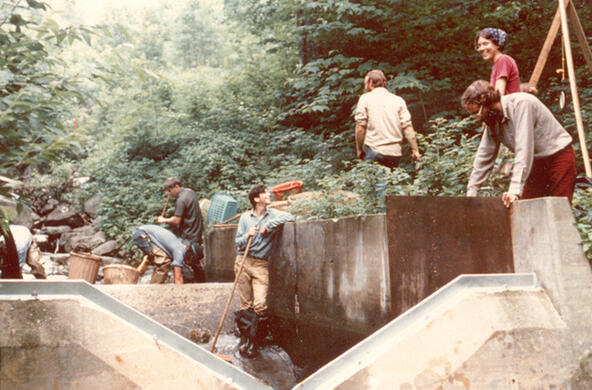On Dec. 11, in the final weeks of his governorship, David Paterson vetoed a six-month moratorium on hydraulic fracturing in New York state. In lieu of the bill, Paterson enacted an Executive Order that allows vertical hydraulic fracturing to continue, but defers permitting on high-volume, horizontal wells until July 1, 2011.
The future of natural gas wells in our state lies with the horizontal drilling method.
Now, in the face of heavy lobbying from the gas industry, it's up to our new governor, Andrew Cuomo, to keep horizontal hydraulic fracturing at bay until the environmental effects of the process are clearly understood.
The large-scale drilling being proposed in the Southern Tier would be transformative; gas wells would tap into the Marcellus Shale Formation, one of the largest natural gas fields in North America. If projections are correct, fortunes would be made and U.S.-generated natural gas supplies would be abundant. But drilling of the magnitude being proposed is unprecedented for the region. And it could have long-term, negative effects on freshwater resources.
Presently, the environmental science on horizontal hydraulic-fracture drilling impacts is incomplete. There is too much at stake to act on incomplete information. For this executive order to be more than symbolic, the state must invest in the sound science needed to inform the policy process.
Hydraulic-fracture drilling involves injecting vast quantities of water mixed with chemicals to fracture the rock containing natural gas, allowing the gas to flow out. To date, corporations have been reluctant to divulge the exact ingredients in fracking fluid. But, scientific analyses have revealed benzene and other carcinogens. And sadly, groundwater pollution by fracking fluids is currently exempt from the Clean Water Act, due to a loophole put in place in 2005.
Studies are being conducted by the Department of Environmental Conservation. But a complete analysis is still needed. This includes not only what happens to groundwater at drilled sites, but the fate of the millions of gallons of freshwater used in the hydro-fracturing process, much of which comes out of wells contaminated with drilling additives.
The emotion surrounding drilling in the Marcellus Shale has been high, as evidenced by the thousands of comments received during public hearings. Citizens and decision makers need to be able to evaluate the true costs and benefits. The state's new governor could play a leadership role to ensure this happens.
Traditionally, environmentalists have embraced natural gas. Relative to other fossil fuels, it emits less carbon dioxide. And, unlike coal and oil, it's not a source of nitrogen oxide and mercury when burned. While this is good news for air quality, environmentalists are worried natural gas drilling may pollute groundwater — an essential resource that is difficult to remediate and slow to regenerate.
Landowners are also in a quandary — do I sign a lease with a gas company not knowing what it will do to my groundwater? Or, does the supply of clean water to my family and grandchildren trump the immediate income I might get from gas extraction?
We can't leave individual interests or emotions in the driver's seat, objective science needs to guide the decision making process. Too often, we discover real problems only after programs are fully implemented, with major investments that are difficult to leave behind.
From a research standpoint, six months is a small window of time. The scientific community needs to act expediently to gather as much information as possible, so we have a clear picture of freshwater pollution risks before the horizontal drilling begins.
Funding for the work should flow from both the corporate world and New York state.







